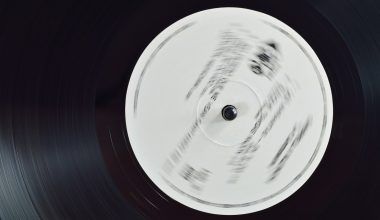In the world of audio production, understanding the basics is crucial for creating high-quality sound. One fundamental concept is the mono track, a simple yet powerful audio format used in various applications. Whether you’re a musician, podcaster, or audio engineer, knowing how mono tracks work can significantly impact your projects.
This guide delves deep into mono tracks, explaining their purpose, benefits, and how they compare to stereo and other formats.
What Is a Mono Track?
A mono track (short for monaural or monophonic) is an audio recording or signal that uses a single channel. Unlike stereo, which involves two channels for left and right sound separation, mono delivers all audio signals through one channel.
Key characteristics of mono tracks:
- All sounds are mixed into a single channel.
- The audio output is identical regardless of the speaker or ear used.
- Ideal for vocal recordings, podcasts, and certain types of music.
History of Mono Tracks
Mono tracks were the standard format in early audio recording. Before the advent of stereo technology, all music, radio broadcasts, and films relied on mono sound. Mono dominated the audio industry until the mid-20th century when stereo systems became more accessible.
Despite the rise of stereo and surround sound, mono tracks remain relevant in specific applications due to their simplicity and clarity.
Applications of Mono Tracks
1. Podcasts and Voiceovers
Mono tracks are ideal for recording spoken words. Since the listener doesn’t need sound separation, mono ensures clarity and consistency.
2. Radio Broadcasts
Many radio stations use mono tracks to ensure that audio sounds the same across all devices.
3. Live Performances
Mono tracks are often used in live sound setups where simplicity and reliability are essential.
4. Telecommunications
Phone calls and voice messaging systems typically use mono audio to prioritize clarity over spatial effects.
Mono Track vs Stereo Track
Understanding the difference between mono and stereo tracks is essential for choosing the right format for your project.
Mono Track:
- Uses a single audio channel.
- Delivers identical sound to all speakers or headphones.
- Ideal for speech and situations where spatial audio isn’t necessary.
Stereo Track:
- Uses two audio channels (left and right).
- Creates a sense of space and direction in the audio.
- Best for music, movies, and immersive audio experiences.
Benefits of Using Mono Tracks
- Clarity: Mono tracks eliminate the complexity of spatial audio, making speech and vocals easier to understand.
- Simplicity: With only one channel, mono tracks are easier to mix and edit.
- Consistency: The sound remains the same on all playback systems.
- Compatibility: Mono tracks are widely supported across all devices and platforms.
How to Record a Mono Track
Recording a mono track is straightforward, but you’ll need the right equipment and settings:
- Choose the Right Microphone
- Dynamic microphones are often used for mono recordings.
- Ensure your microphone captures sound from a single source.
- Set Up Your Recording Software
- Use a digital audio workstation (DAW) like Audacity or Adobe Audition.
- Select mono as the input option before starting your recording.
- Position the Microphone Correctly
- Place the microphone close to the sound source for clear audio.
- Avoid background noise to maintain clarity.
- Edit and Save
- After recording, edit your mono track to remove noise or enhance quality.
- Save the file in a mono-compatible format like MP3 or WAV.
Editing Mono Tracks
Editing mono tracks is typically easier than stereo or multichannel audio. Here are some tips:
- Use EQ (Equalization)
- Adjust frequencies to improve vocal clarity or instrument tone.
- Noise Reduction
- Remove background noise for a cleaner sound.
- Compression
- Apply compression to balance volume levels.
- Export in Mono
- Ensure your final export maintains the mono format to avoid compatibility issues.
Converting Stereo to Mono
Sometimes, you might need to convert a stereo track into mono. This can be done using audio editing software:
- Import the Stereo File
- Load the track into your DAW.
- Combine Channels
- Merge the left and right channels into a single channel.
- Export the Mono Track
- Save the converted file in a suitable format.
Common Challenges with Mono Tracks
- Lack of Depth
- Mono tracks lack the spatial depth of stereo, which can make music sound flat.
- Limited Creativity
- For artistic projects, mono tracks may feel restrictive compared to stereo or surround sound.
- Compatibility Issues
- While rare, some modern systems may default to stereo playback, affecting the mono experience.
The Future of Mono Tracks
While stereo and spatial audio dominate modern entertainment, mono tracks continue to serve niche purposes. Their relevance in podcasts, broadcasting, and telecommunications ensures they remain a vital part of the audio landscape.
Advancements in audio technology may further optimize mono tracks for specific applications, combining clarity with modern enhancements like AI-based noise reduction.
Conclusion
The mono track is a simple yet powerful format that remains relevant in the world of audio production. Whether you’re creating a podcast, recording a voiceover, or broadcasting a live event, mono tracks offer unmatched clarity and consistency.
By understanding their purpose, benefits, and applications, you can make informed decisions and elevate your audio projects.
Related Articles:
For further reading, explore these related articles:
- What is Mono Audio: A Simple Guide to Mono Sound and Its Applications
- Mono vs Stereo: Key Differences Explained in Simple Terms
For additional resources on music marketing and distribution, visit Deliver My Tune.






